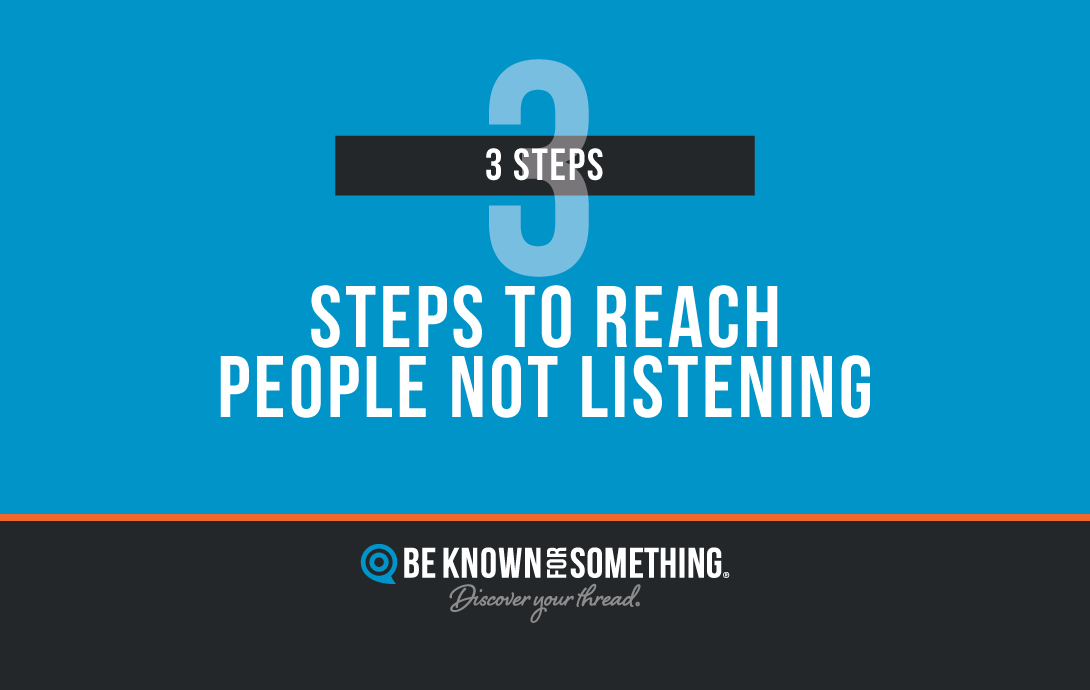If you want to reach people not listening, it feels like an overwhelming, impossible task! There are a few reasons people don’t listen:
- the world is noisy so, as a defense mechanism, they can’t listen to everything. Instead they pick and choose what they want.
- they also tune out messaging that’s beyond their shrinking attention span. Say too much and they end up not listening.
- they also ignore content delivered by someone perceived as unneeded or irrelevant. Perception is critical to getting someone to pay attention!
So, is the church doomed? Sadly, our ministries often violate all three of these reasons. It’s no wonder that our communities stopped listening to us years ago. Let’s fix that!
How can the church reach people not listening? We need to pursue a brief interaction. Just to get them to look up and listen for a short time! If done correctly, it’ll help them understand we are relevant and needed. Here are 3 steps to helping them listen again:
- Say their name. Even in a loud room, if someone says your first name, it breaks through and gets your attention. That’s why good conversationalists naturally use people’s names when they meet someone. But how does the church do this for a group? It’s fairly easy. Ensure you understand the stereotypical group (communication persona) who needs to hear what you’re saying and identify what they’d call themselves. This persona’s name needs to preface important messaging (i.e. “Parents with young kids? We have a night out for you”).
- Speak their pain. When you care for your persona (that sought-after stereotypical group) like God’s commanded us to, you must understand what they’re struggling with. To reach people not listening, you need to talk about their pain, concern, or challenging goal. In a crowded room with lots of talk, simply mentioning “back pain” will instantly gain the attention of those who’s been affected with back pain! It demonstrates you understand them. The church needs to identify needs, concerns, and goals of their persona and weave it into the messaging (i.e. “Parents of young kids, we know you want the best for your child, so we’ve created a short video with daily tips just for you”).
- Solutions to proclaim. If you quickly pivot from saying their name and speaking their pain; to suggesting a surprising solution, you will certainly hold their interest to a period of decision. This requires the church to couple solutions to prominent felt-needs once we get their engagement (i.e. “Parent, it’s difficult to raise children, but the church wants to give you free access to entertaining videos that teach Bible principles”).





